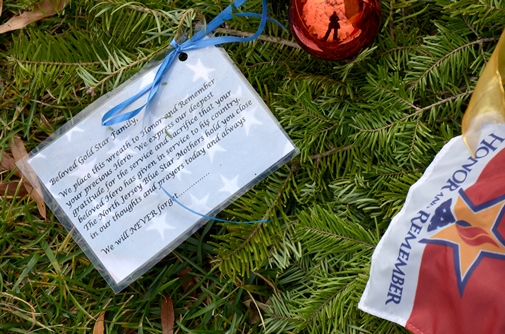Death Is Everywhere
The Soldier and Society Researcher Team, Birgitte Refslund Sørensen, Mads Daugbjerg and Thomas Randrup Pedersen, went on a research trip to Washington, D.C. and New York City, December 2014. The group visited the US capital and the Big Apple in connection with their panel at the 113th Annual Meeting of the American Anthropological Association (AAA), Washington, D.C., 3-7 December 2014 (click here, for a description of the panel Knowing War).
Apart from taking part in the academic conference organized by the AAA, the purpose of the trip was to study North American commemoration cultures and to compare them with Danish counterparts within the specific research areas of the three Soldier and Society members (click here, for a description of the research conducted by each team member). Obviously, the Researcher Team was particularly interested in studying commemorations of US service members. Yet, as the terror attacks on September 11, 2001 have heavily influenced the nature of contemporary warfare and soldiering, let alone nature of our society as such, the group also paid considerable attention to commemorations of 9/11.
The highlights of the research trip included: Arlington National Cemetery, the National 9/11 Pentagon Memorial, the US Marine Corps War Memorial, the National Mall (National World War II Memorial, Korean War Veterans Memorial, Vietnam Veterans Memorial), New York City Fire Museum, and the National September 11 Memorial and Memorial Museum.
A few words on Arlington National Cemetery and the National September 11 Memorial:
Arlington National Cemetery
Arlington National Cemetery is one of the largest military cemeteries in the world. The cemetery dates back to the American Civil War and has, over the years, grown into a national shrine to those who have served the American nation. The number of graves is overwhelming. Death is everywhere, in tomb after tomb, in memorial after memorial, in monument after monument. Here, across the Potomac River from Washington, D.C., more than 400,000 active duty service members, veterans, and their families are laid to rest. Here, more than 3,000 ceremonies and memorial services take place each year. Thus, more than 25 funeral services are conducted each weekday and another 5-8 services each Saturday. The number of annual visitors to the cemetery is close to 4 million. Its 624 acres are divided into 70 sections. Among these, one section was of special interest to the Soldier and Society Researcher Team, namely Section 60, the final resting place for US military personnel killed in the Global War on Terror since 2001. Here, the number of visitors, flags, flowers, wreaths, pictures, letters, and personal objects at the gravesites are more numerous than elsewhere in the cemetery. In this section, at the end of the line of the last row of the ever-growing number of white tombs, rest the most recently fallen US soldiers. No tombstones have yet been erected on their muddy graves. Only a small temporary gravemarker, an official note with names and numbers, mark the buried remains of yet another soldier. That soldier could be one of the last ones to lose his life in Afghanistan, but the empty plots adjacent to the newest gravesites in Section 60 ominously indicate that there is plenty of space left for the future burial of US military personnel from new global elsewheres, new fronts in the Global War on Terror.
The National September 11 Memorial
The National September 11 Memorial in New York City commemorates the nearly 3,000 people killed in the terror attacks of September 11, 2001, and the six people killed in the World Trade Center bombing, 26 February 1993. The memorial was inaugurated on the tenth anniversary of 9/11 on 11 September 2011. It is located at the former World Trade Center site in lower Manhattan, New York City. The memorial’s two reflecting pools thus sit exactly where the Twin Towers once stood, each demarcation their perimeters precisely. Large waterfalls spring from all four sides of each pool. The sound of the falling water brings images of the falling Twin Towers to mind. The names of all individuals who lost their lives in the terror attacks in 2001 and in 1993 are inscribed in the panels circumscribing the pools. Death is everywhere; in the water, in the names, in the tears running down a visitor’s face. When the Researcher Team visited the memorial in December 2014, 9/11 had taken place more than thirteen years ago. All the same, the number of inscribed names, the size of the pools, the scars on the surrounding buildings, and the still ongoing rebuilding of the World Trade Center complex, were quite overwhelming. The first response was one of silence and solitude. The second response was one of putting pieces together: to be at Ground Zero was also to be standing at the bedrock of the subsequent ‘War on Terror’ and of the recast world of new conflicts, new alliances and new fears and suspicions that these violent events set in motion.
To see more pictures go to the facebook profile of the Department.

Wreath at gravesite, Section 60, Arlington National Cemetery, Arlington, VA. Photo: Thomas Randrup Pedersen ©
